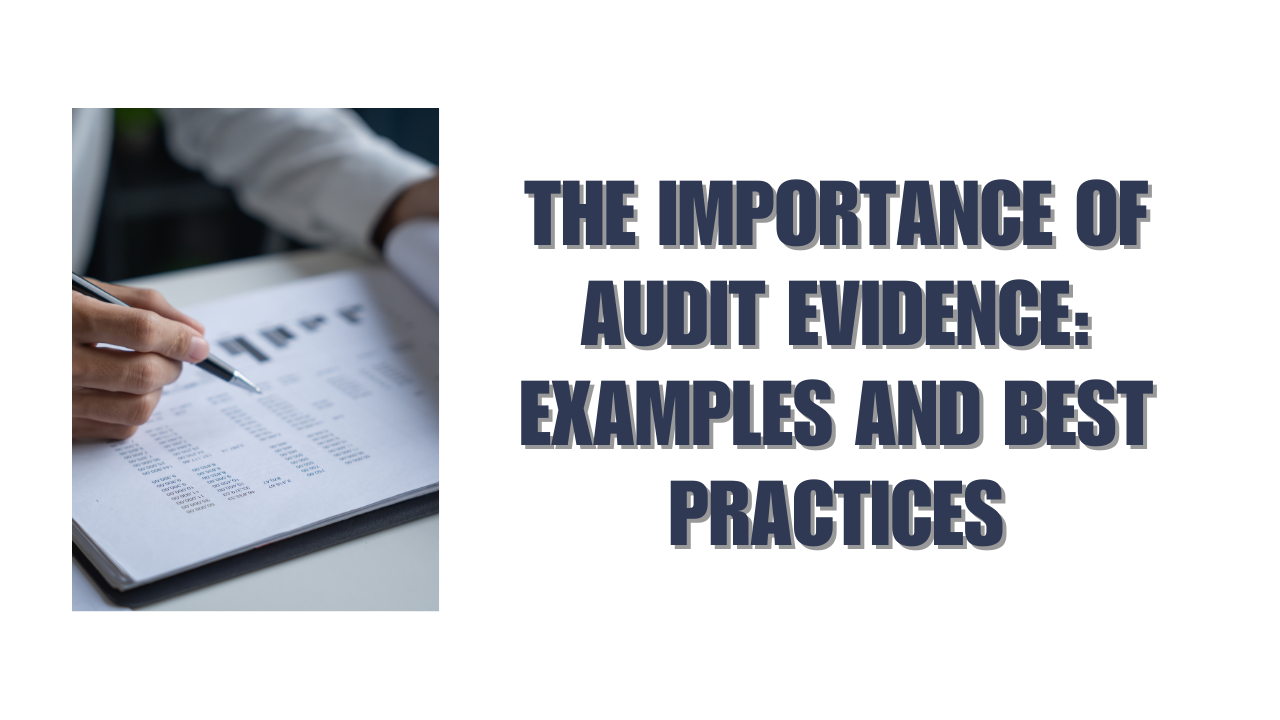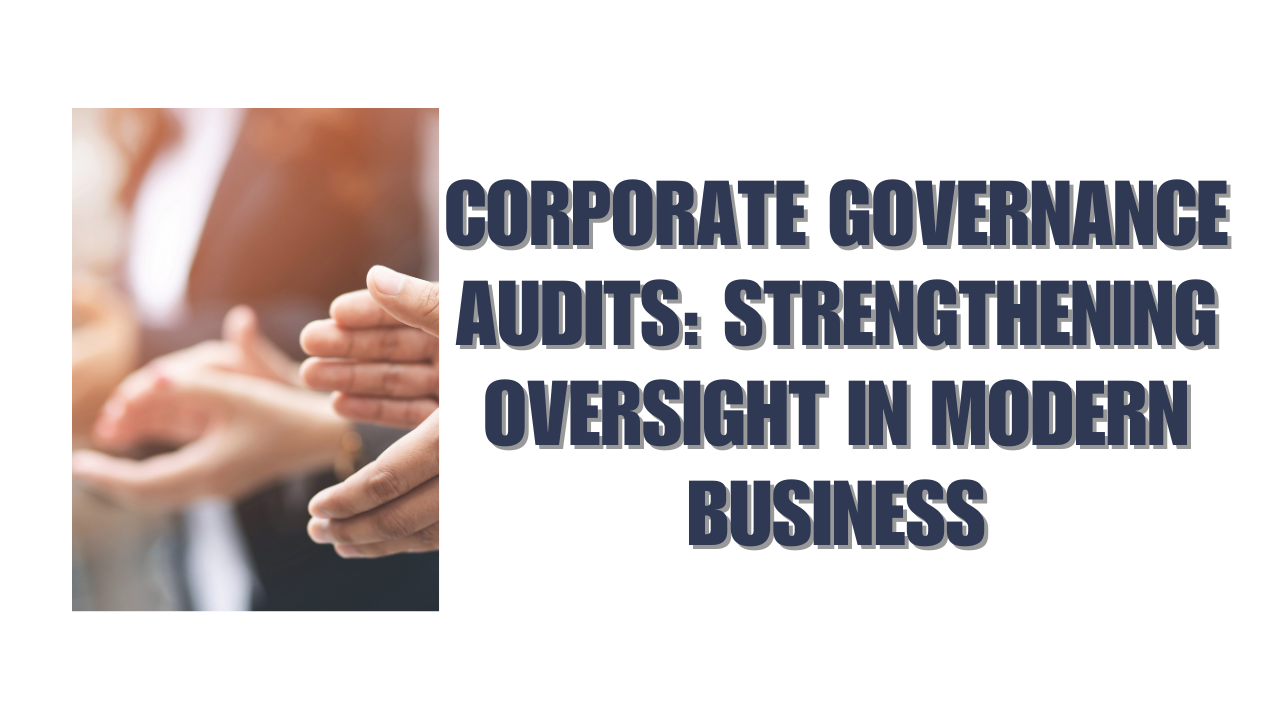Strong corporate governance is how a business earns trust, manages risks, and delivers long-term value. Boards and executive teams know that governance failures can erode investor confidence overnight, but what many overlook is the role audits play in strengthening governance structures.
Audits, when approached strategically, go beyond financial accuracy. They provide assurance, highlight blind spots, and reinforce the accountability that underpins good governance. For modern businesses, aligning audit processes with governance goals is a powerful way to protect reputation and drive performance.
Why Audits and Corporate Governance Are Connected
Corporate governance refers to the framework of rules, practices, and processes by which a company is directed and controlled. It defines how decisions are made, how accountability is ensured, and how stakeholders are protected.
Audits, both internal and external, act as independent checkpoints within this framework. They validate whether management is adhering to policies, whether reporting is transparent, and whether risks are being managed effectively. Without robust audits, corporate governance becomes theory rather than practice.
In other words, while governance sets the expectations, audits provide the proof.
The Role of Audits in Strengthening Governance
Audits serve several critical functions that directly enhance governance structures:
1. Ensuring Financial Integrity
Accurate financial reporting is the foundation of trust between a company and its stakeholders. External audits verify the accuracy of financial statements, ensuring that boards, investors, and regulators can rely on them. This reduces the risk of misstatements or fraud undermining governance.
2. Reinforcing Accountability
Audits make management accountable to the board and shareholders. By evaluating adherence to internal policies and controls, they highlight whether leadership decisions align with governance standards.
3. Strengthening Risk Management
Corporate governance is only as strong as a company’s ability to manage risk. Audits identify weaknesses in systems, processes, or compliance, providing boards with actionable insights to mitigate risks.
4. Promoting Transparency
A transparent business culture builds credibility with external stakeholders. Audit reports create clarity on financial and operational matters, reinforcing governance principles of openness and fairness.
5. Enhancing Ethical Standards
Strong audits go beyond numbers. They assess whether the company’s behavior aligns with stated values and codes of conduct, ensuring governance is written policy but with lived practice.
Internal vs External Audits in Governance
Both internal and external audits contribute to effective governance, but in different ways.
- Internal Audits: Conducted by in-house teams or outsourced specialists, internal audits review operational processes, compliance, and internal controls. Their insights are critical for boards seeking to monitor risk and improve governance on an ongoing basis.
- External Audits: Performed by independent auditors, these focus primarily on verifying financial statements. They assure stakeholders outside the company that financial reporting is accurate and unbiased.
When combined, internal and external audits create a robust governance ecosystem, balancing day-to-day oversight with independent validation.
Best Practices: Using Audits as a Governance Tool
To truly leverage audits as a tool for governance, companies should adopt certain best practices:
1. Integrate Audit Findings into Board Discussions
Boards should not view audit reports as formalities. Instead, findings should feed directly into governance discussions on risk, compliance, and strategic planning.
2. Foster a Culture of Cooperation
Strong governance requires open communication between auditors, management, and the board. Encouraging transparency in audit interactions ensures that risks are addressed proactively rather than reactively.
3. Link Audits with Risk Management Frameworks
Rather than treating audits as standalone activities, companies should align them with enterprise risk management strategies. This creates a continuous loop of monitoring and improvement.
4. Prioritize Independence
To preserve credibility, external auditors must remain independent, while internal audit teams should report directly to the board or audit committee rather than management. This safeguards governance integrity.
5. Leverage Technology
Data analytics, automated reporting, and continuous monitoring tools can make audits more comprehensive. Boards benefit from real-time insights, improving governance responsiveness.
Common Audit-Driven Governance Improvements
In practice, many companies use audits to drive governance improvements, such as:
- Tightening controls around financial reporting to prevent misstatements.
- Identifying compliance gaps with regulations and industry standards.
- Improving operational efficiency by streamlining processes flagged in audits.
- Establishing ethical safeguards, such as whistleblower protections, based on auditor recommendations.
These improvements reduce risk and also demonstrate to shareholders and regulators that governance commitments are being met.
Challenges Businesses Face
Despite the clear benefits, some businesses struggle to align audits with governance. Common challenges include:
- Limited board engagement: Audit reports may be treated as technical documents instead of governance tools.
- Resource constraints: Smaller companies may lack the expertise to fully integrate audit insights.
- Resistance to transparency: Management may hesitate to disclose weaknesses, undermining governance principles.
Overcoming these challenges requires commitment at the top level. Boards and leadership must view audits as an opportunity to strengthen governance credibility.
Looking Forward: Audits as Strategic Assets
As global regulations tighten and stakeholder expectations rise, the role of audits in corporate governance will only expand. ESG (Environmental, Social, Governance) reporting, data privacy compliance, and supply chain transparency are creating new dimensions of risk. Audits are evolving to cover these areas, helping boards navigate the complexity of modern governance.
Forward-looking companies will treat audits as strategic assets-tools to improve resilience, attract investors, and maintain long-term value.
Conclusion
Effective corporate governance is built on accountability, transparency, and trust. Audits reinforce each of these pillars, transforming governance frameworks from paper-based policies into living practices. By integrating audit insights into board decision-making, fostering transparency, and embracing innovation, businesses can elevate their governance standards.
In today’s environment, where credibility is as important as performance, audits are more than a compliance requirement and serve as the backbone of strong corporate governance. Partnering with experienced auditors ensures boards have the insights they need to safeguard reputation, manage risk, and inspire stakeholder confidence.
FAQs
1. How do audits support corporate governance?
Audits verify financial accuracy, assess internal controls, and highlight risks. By providing independent assurance, they help boards enforce accountability and strengthen governance frameworks.
2. What is the difference between internal and external audits in governance?
Internal audits focus on operational controls and compliance, while external audits provide independent validation of financial reporting. Together, they create a balanced governance framework.
3. Why should boards pay close attention to audit reports?
Audit reports provide critical insights into risk, compliance, and operational integrity. When boards actively engage with these findings, governance becomes more effective and credible.






